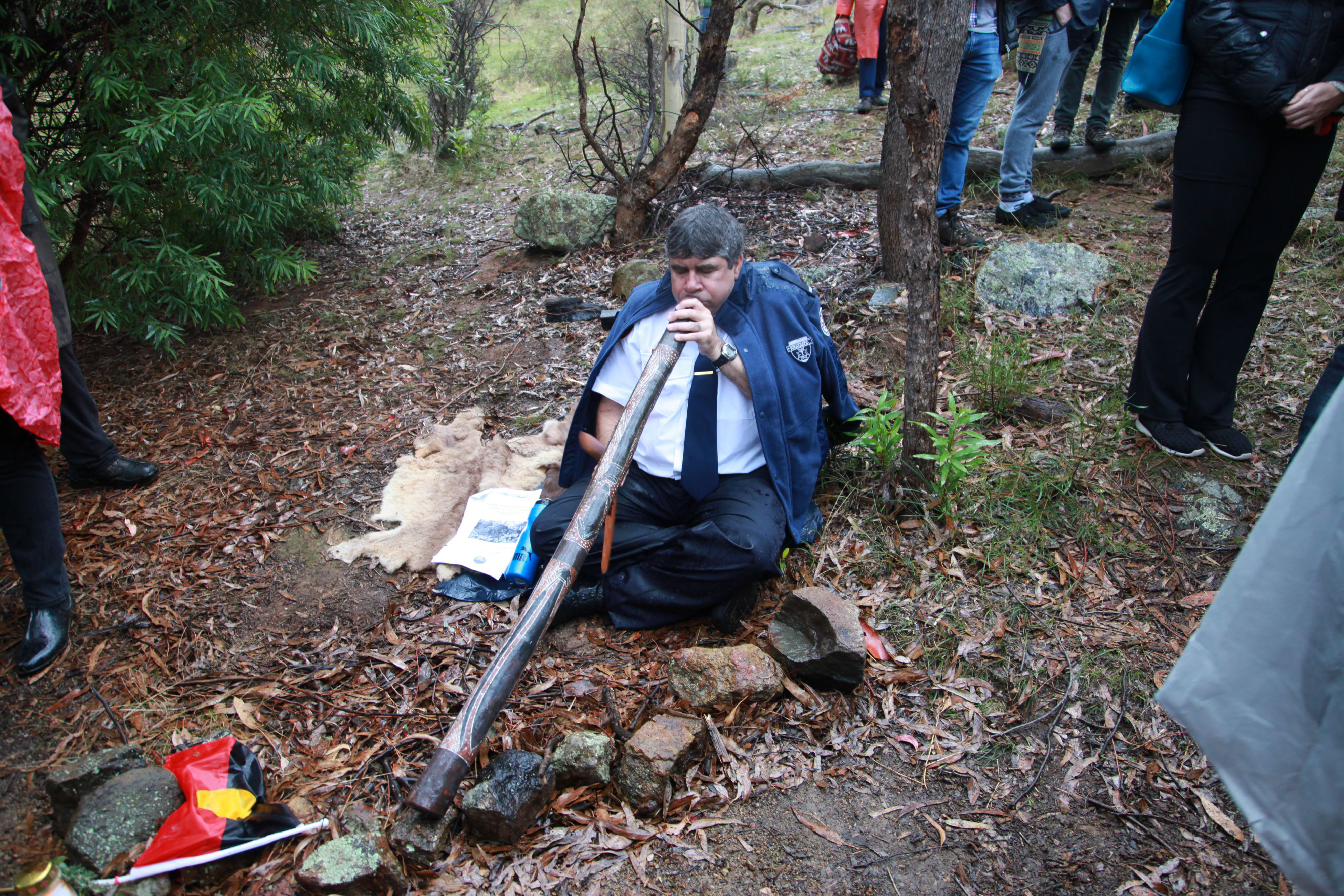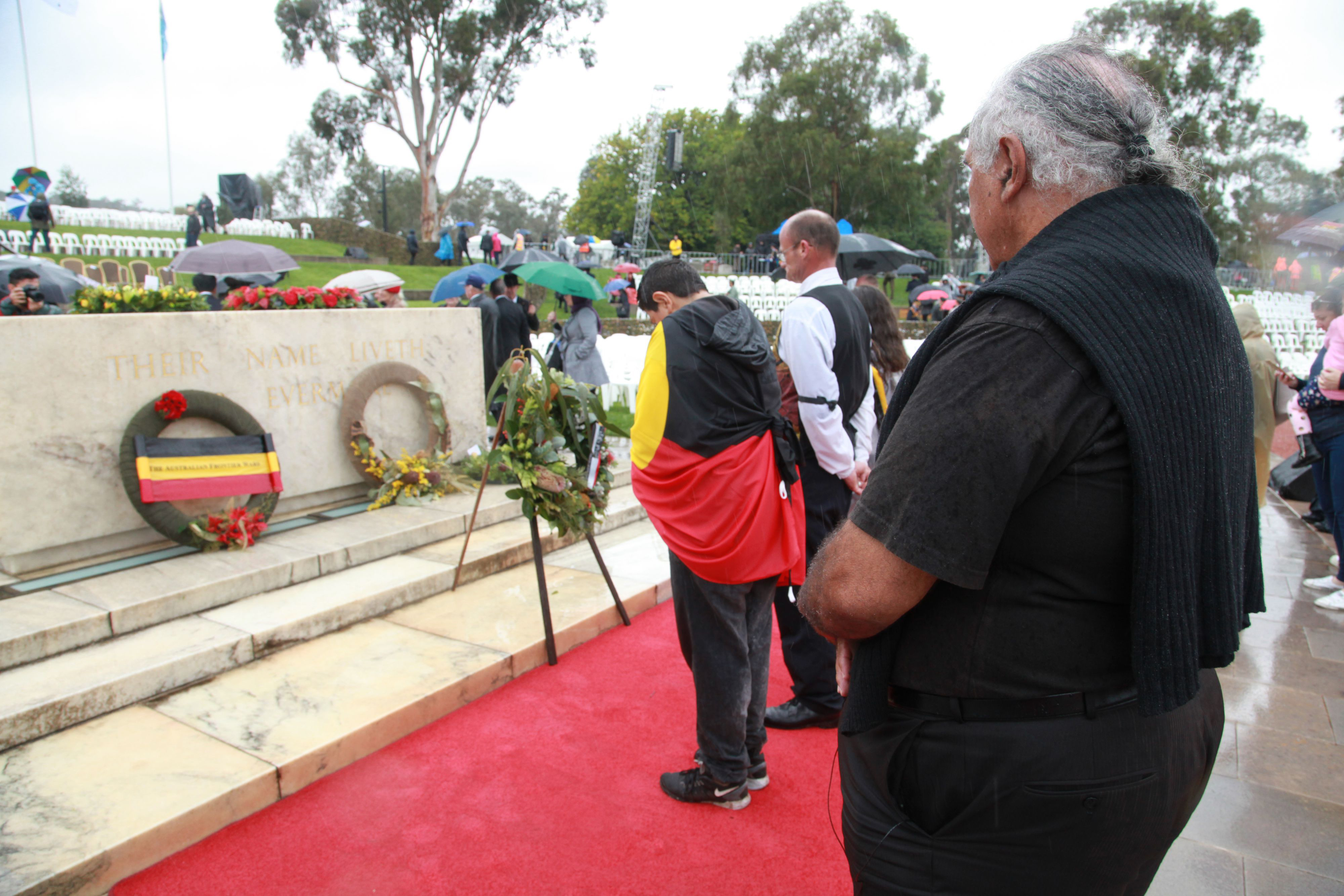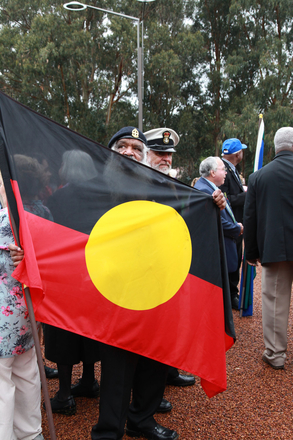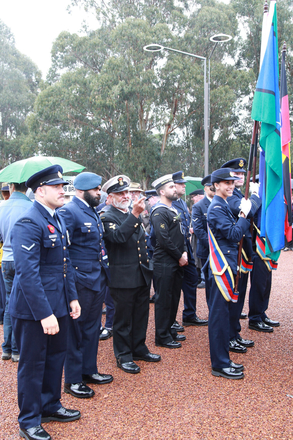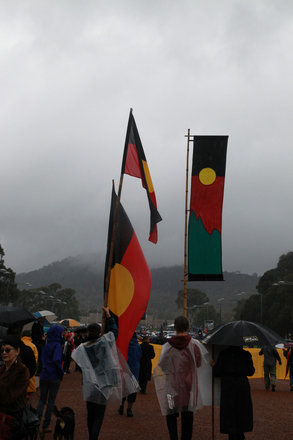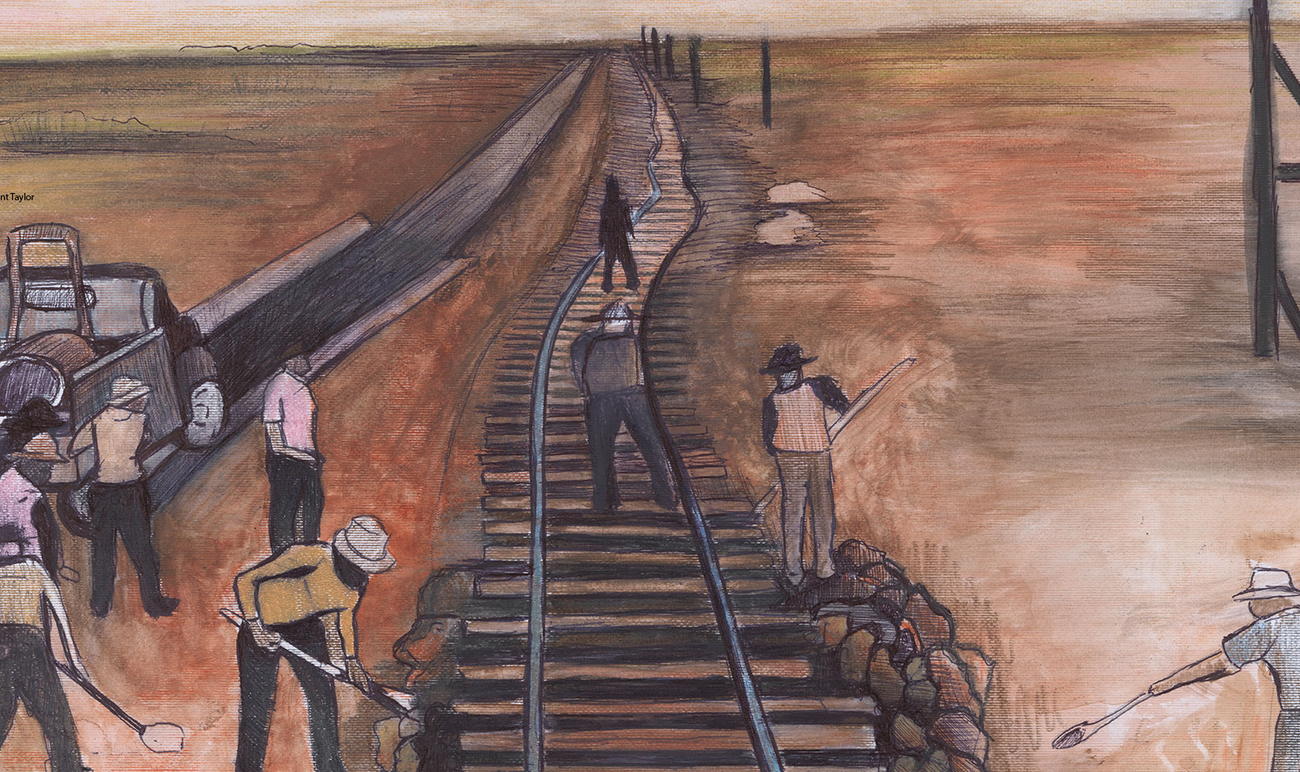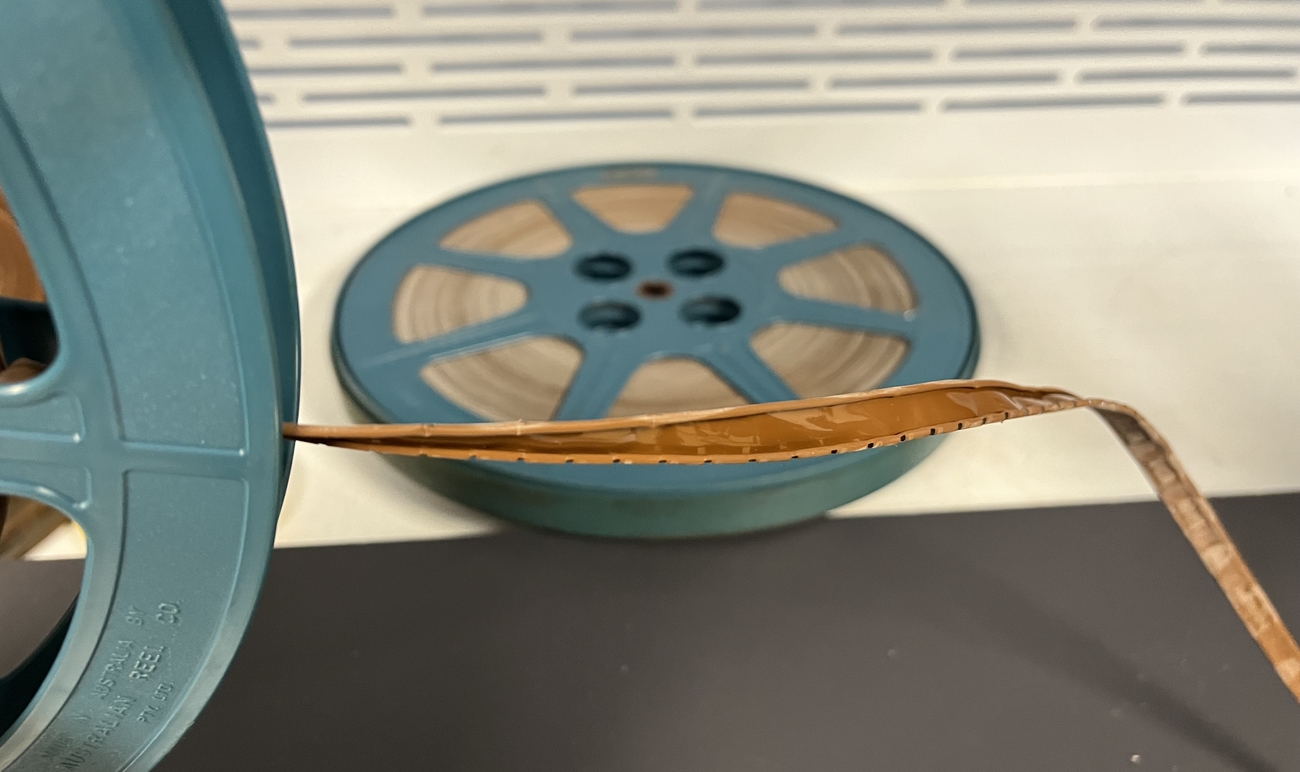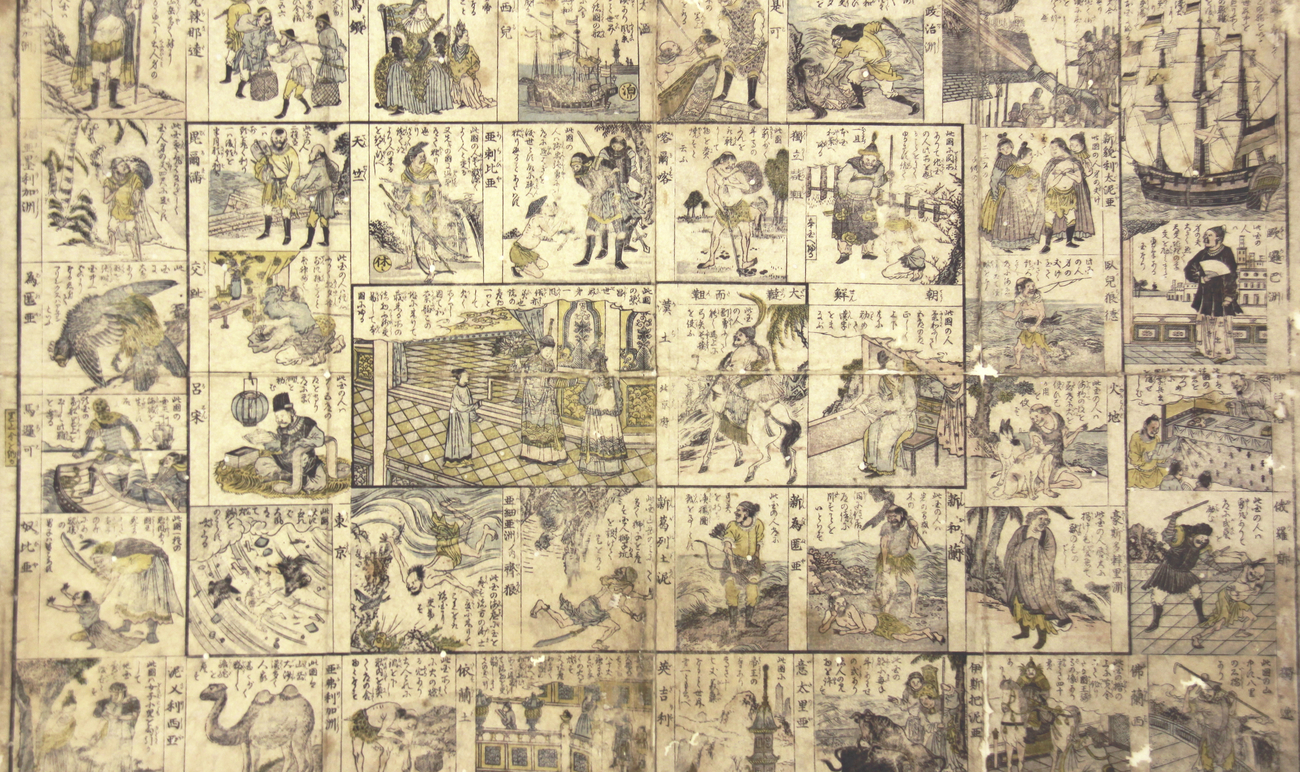In a tranquil and reflective bush setting on the slopes of Mount Ainslie just behind the massive Byzantine Revival style of the Australian War Memorial is a small plaque on a lichen covered rock outcrop which reads:
"Remembering the Aboriginal people who served in the Australian force"
This plaque was originally put in place by local residents approximately 17 years ago and in its early years, members of ATSIVA (Aboriginal and Torres Strait Islander Veterans Association) would gather here in quiet contemplation at the end of the Anzac Day Dawn Service, friends and colleagues would join them. Through the efforts of their members and in particular Gary Oakley and Garth O’Connell, this little plaque has grown in significance as the site where a commemoration ceremony is conducted to honour Indigenous Australians who served in the Australian forces since 1901 and is now part of the official Anzac Day service.
The 2017 ceremony started with the familiar sound of the didgeridoo played by Dharawal man, Jeff Timbery. Ngunnawal Nation man and Indigenous Liaison Officer at the AWM Michael Bell welcomed us to the country. The Commemorative address was given by Colonel Glenn Scott, a senior officer of the New Zealand Army (Ngati Tumatauenga) of Ngati Whatua and Te Uri ot Hau descent who focused on the relationship between Indigenous and Non-indigenous service people serving alongside and paid special tribute to Maori, Indigenous Australians, Papuans and New Guineans. All those present joined in reciting the ‘Coloured Digger” poem written by Sapper Ben Beros in 1942 about Aboriginal Private Harold West of the 2/1st Battalion AIF, floral tributes were laid and events concluded with the Ode of Remembrance.
Through intermittent drizzle and the occasional downpour, participants and observers of the ANZAC Day national ceremony march gathered in renewed friendships forged on common purpose. This year's march was all the more significant for Aboriginal and Torres Strait Islander veterans, serving personnel and descendants of the ‘Black Diggers’ who were only recognised for their service recently. It was the first time in Australia's 107 year commemoration of ANZAC Day that they led the march. Several thousand Aboriginal people and Torres Strait Islanders served in the armed forces from the Boer War to the present.
"We've waited a long time for this…it’s an act of self determination" — Uncle Abby (Albert Wilson, Rat of Tobruk descendant
Trevor Wilson from Coffs Harbour was the Aboriginal flag bearer and Patrick Mills the flag bearer for the Torres Strait Islander flag. The most often heard comment regarding the meaning of the day was: “we've waited a long time for this”, in fact so much so that participants paid their own way to be able to take part in this historic occasion. Among those marching were descendants of Albert Knight (represented by John Phillips) and William Allan Irwin (represented by Peter Milliken) who are the only known Aboriginal soldiers to have received the DCM (Distinguished Conduct Medal) in WWI.
The march's formal proceedings concluded with the Sovereign Union march who since 2010 have used the occasion as an opportunity to commemorate the Frontier Wars. According to Sovereign Union founder and march organiser Michael Anderson its purpose being to recognise and remember Indigenous Australians killed by settlers in the massacres and skirmishes dating from 1770-1928. As Paul Daley has noted: “Frontier wars almost certainly claimed more Indigenous lives than the Australian death toll in the first world war.” Wreaths were laid by Jai Russell, Anthony Coghlin and Dakota Tompkins.
References
Australian War Memorial, 1994. Too Light for the Dark Horse.
Australian War Memorial, 2017. Discovering ANZACS – Albert Knight DCM.
Daley, Paul, 2017. Black Diggers are hailed on ANZAC Day. But the Indigenous ‘great War’ was in Australia.
National Archives of Australia, 2017. Discovering ANZACS – William Allan Irwin DCM.
